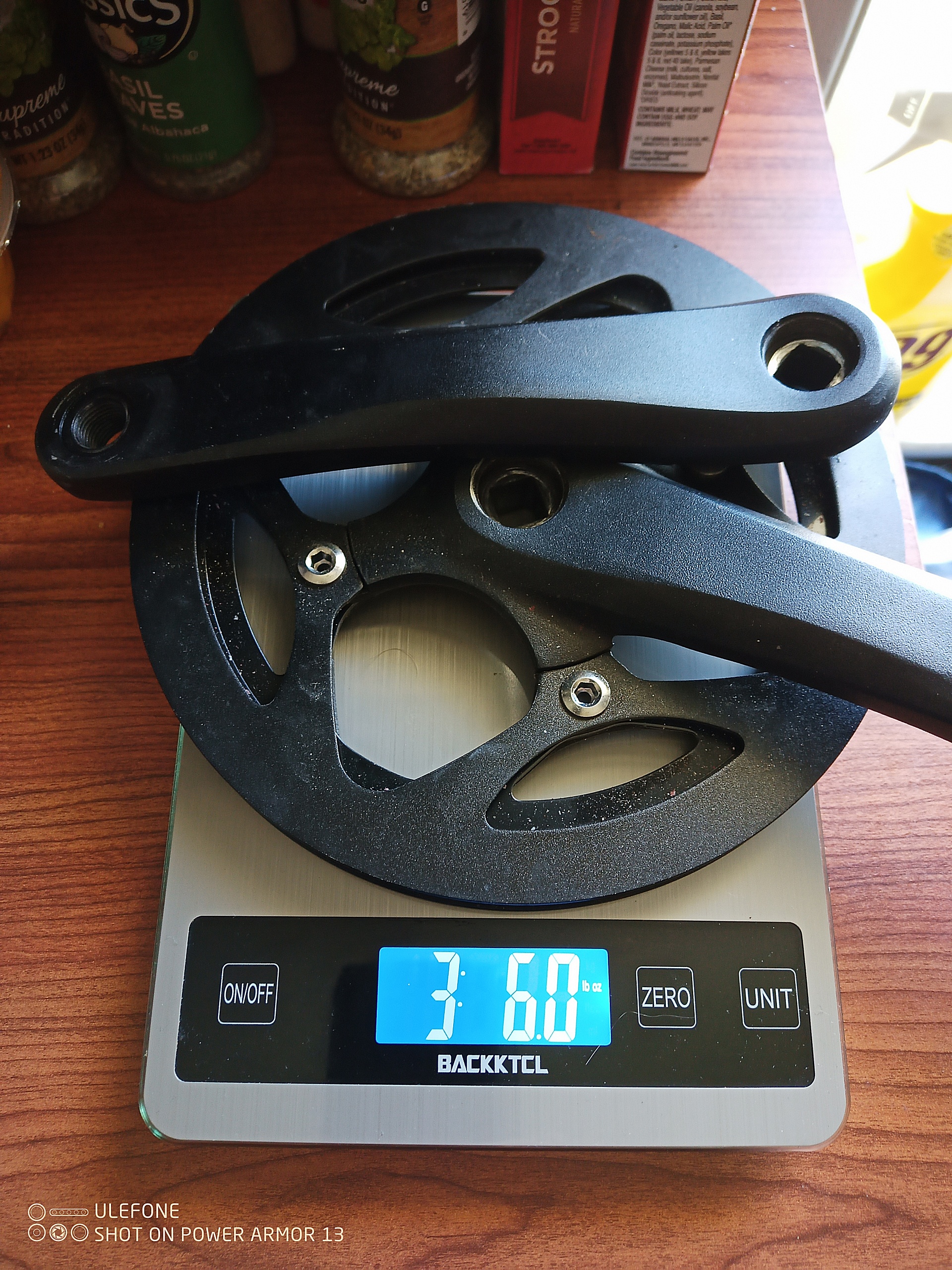So in other words about the same weight as the
allegedly "forged" cranks that came with my Aventure by the time you put the weight of the absurd ring guide, chainring, and BB in the mix.
Hell, chainring and cranks for what my
Aventon came with is 3 pounds 6 ounces without figuring the BB cart into the mix!
The laugh being those called "forged' when the texture is clearly sand cast, there's flash lines... about the only thing 'forged' on them is the information stamped on the back... like them being labelled 175mm, when Aventon says they're 170mm, and measuring center to center they're 165mm which is why they're 5mm shorter than the 170's I replaced them with.
Ashtabula (aka one piece) cranks are painfully common on single speed and three speed cruiser bikes. It's one area of bike tech where I'm quite well versed, and they have some advantages. They are cheap, almost never seem to go bad even when you
wish they would, and you never have to worry about them loosening up and falling apart. Even better if you do need to service them (a rarity) with lube or new bearings you can do so without even taking the crank off the bike.
I've did a lot of conversions from Ashtabula to three piece, and honestly the difference is... dubious. For the pound or two you save in weight with a good aluminum set of cranks and quality BB, It can cost you reliability depending on the quality of shim you use since the bb shell / cage is so much larger in diameter than most "off the shelf" sealed units.
See my old cruiser where I made that swap.
Those adapters (51.3mm to 36mm) are finicky, hard to align, loosen up as they settle in from riding in a way that means the first three weeks or so you should NOT use threadlock on them
(because you'll be fighting bedding it in), etc, etc. It is not a conversion I would do for anyone not qualified to maintain their own bike or who is unwilling to do routine checks.
I would actually be worried about putting a mid-drive on there unless they come with their own shims designed for it. I'm no expert on mid-drive but everything I keep hearing about them confirms my suspicion that it would not be a great technical match
for me as a rider, or even for bikes that go even slightly out of parameters from a very narrow range of frame styles. Seems that the more you have to dick with the frame to make them fit, the worse they get.

